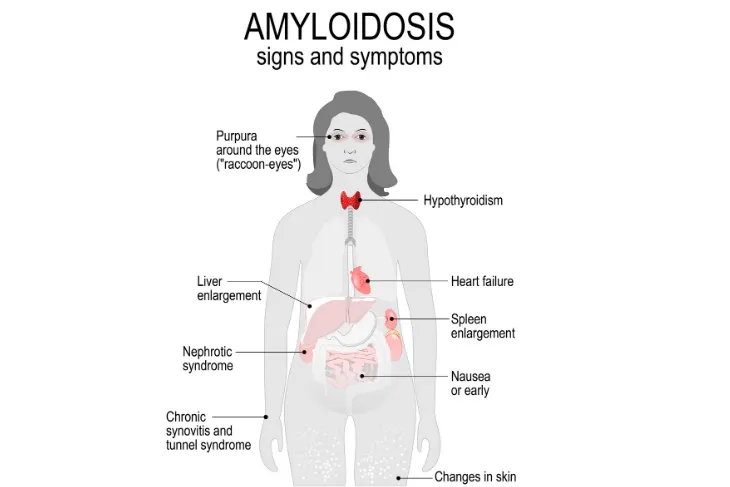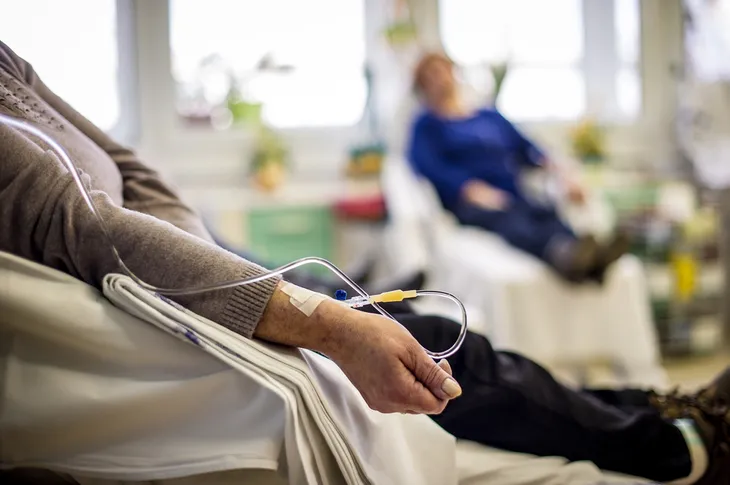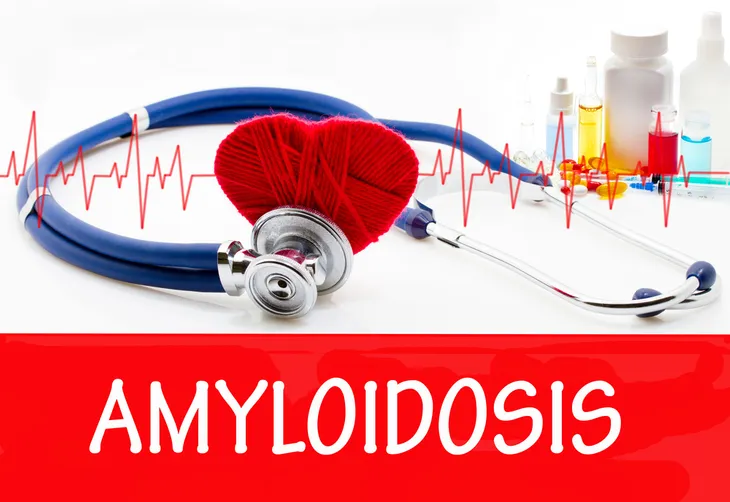Amyloidosis is a serious condition that can affect the heart, kidneys, intestines, joints, and other major organs. While there are different types of amyloidosis, the most common is amyloid light-chain (AL) amyloidosis. It’s estimated that 4,000 people develop this condition annually in the U.S. It can be difficult to track the prevalence of amyloidosis, because the diagnosis is often delayed or never discovered. That’s why it’s important to search online and learn what symptoms to look out for.
There are different types of amyloidosis that impact certain parts of the body more often than others. You can learn more about amyloidosis by searching online.
Here’s what you should know about amyloidosis.
What is Amyloidosis?
Amyloidosis is a rare disease and represents the build-up of an abnormal protein, amyloid, in tissues and organs. This abnormal protein can negatively affect their shape and function, which can be potentially life-threatening.
There are different types of amyloidosis.
- AL Amyloidosis (also called primary amyloidosis) — the most common type, which has no known cause, and typically affects the heart, kidneys, liver, and nerves.
- Amyloid A (AA) Amyloidosis (also called secondary amyloidosis) — this condition is usually the result of chronic infection or inflammatory disease, such as osteomyelitis or rheumatoid arthritis, and mostly affects the kidneys.
- Dialysis-Related Amyloidosis (DRA) — this condition can occur in those on dialysis (usually > 5 years duration) and is caused by deposits of beta-2 microglobulin building up in the blood; it most commonly affects the bones, joints, and tendons.
- Familial or Hereditary Amyloidosis — this is a rare form of the disease that’s passed down through families and often affects the liver, nerves, heart, and kidneys.
- Wild-Type Amyloidosis (also known as senile systemic amyloidosis) — this condition mostly affects the hearts of older men (≥ 70 years of age) and can cause carpal tunnel syndrome.
Symptoms of Amyloidosis
The symptoms of amyloidosis will ultimately depend on the part of the body in which amyloids is being deposited. While people may not experience symptoms in early stages, it’s possible enough amyloid can accumulate and negatively affect the body’s organs.
General symptoms of amyloidosis may include fatigue, weakness, shortness of breath (with minimal exertion), joint pain, bruising around the eyes or on skin, enlarged tongue, or carpal tunnel syndrome.
Localized Symptoms
A person may experience specific localized symptoms when amyloidosis is prevalent in certain parts of the body.
Symptoms of amyloidosis affecting the heart may include:
- Shortness of breath
- Fast, slow, or irregular heart rate
- Chest pain
- Low blood pressure, which could cause lightheadedness/fainting
Symptoms of amyloidosis affecting the gastrointestinal tract may include:
- Nausea
- Diarrhea
- Constipation
- Appetite loss
- Weight loss
- Feeling of fullness right after eating
Symptoms of amyloidosis affecting the nerves may include:
- Pain, numbness, or tingling in the hands, feet, and lower legs
- Dizziness when standing up
- Nausea
- Diarrhea
- Inability to feel cold or heat
Symptoms of amyloidosis affecting the kidneys may include:
- Swelling in the legs
- Foamy urine
Symptoms of amyloidosis affecting the liver may include:
- Pain and swelling in the upper part of your abdomen
Keep in mind that many of these symptoms are commonly found in other conditions, so what you’re experiencing may not be amyloidosis. If these symptoms persist, see your doctor for a checkup to find out the cause.
Treatments for Amyloidosis
Doctors will order blood tests, urine tests, and biopsies to diagnose and monitor the progression of AL amyloidosis. Patients will then work with specialists to treat the condition depending on where they are experiencing symptoms.
The goal of treating amyloidosis is to slow down or stop the overproduction of amyloid. Treatment also focuses on managing symptoms and preventing them from worsening to the point of irreversible organ damage.
Chemotherapy uses drugs to destroy abnormal cells and stop their ability to grow and divide. This treatment may be given in the form of an intravenous (IV) infusion, a shot under the skin, or an oral pill. Alternatively, targeted therapy can target specific proteins or genes to block the growth of abnormal cells while limiting damage to healthy cells in the process.
In more severe cases, organ transplants may be required. This might not be an option for patients with large amounts of amyloid proteins already deposited in their organs. If a person has untreatable amyloidosis, the goal will be to minimize symptoms and make life more comfortable.
Learn More About Amyloidosis Online
Amyloidosis is a rare disease with no exact cure. Some patients may have successful treatments that eliminate or minimize the amount of amyloid proteins produced in the body, while others may progress to advanced or terminal stages.
Since there is no way to prevent amyloidosis, recognizing the symptoms and getting an early diagnosis may increase the chances of successful treatment. Learn more about the different types of amyloidosis and their symptoms by searching online or talking to your doctor.








